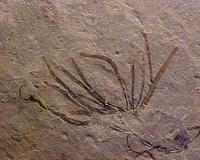| . |  |
. |
Tsavo National Park, Kenya (AFP) Feb 13, 2011 A slowdown in the increase of Kenya's elephant numbers is raising fears among conservationists that hard-fought gains in saving the animals may be reversed amid growing demand for ivory. An aerial census conducted in the east African country's largest elephant sanctuary last week showed a drop in the population's growth rate from a previously recorded four percent to two percent. A total of 12,572 elephants were counted in the expansive Tsavo ecosystem, which may mark a slight increase from the previous count in 2008 of 11,696 but also represents a decline in the growth rate. Julius Kipng'etich, the director of the Kenya Wildlife Service, said the slowdown might reflect "increased demand for ivory and the subsequent rise in poaching." Kenya has lost dozens of elephants in recent years and authorities say the one-off sale of ivory stockpiles granted to four southern African states in 2008 by the Convention on International Trade in Endangered Species (CITES) has increased demand in Asian countries. "We have seen cases of poaching increasing," said Kipng'etich. Iain Douglas-Hamilton, the founder of London-based group Save the Elephants, said rising wealth in Asia was driving increasing demand for ivory, which is highly sought in Asia for use in traditional medicines and ornaments. "I am exceedingly worried about the increase in poaching because I think it is linked to a more fundamental factor which is the increase in demand in China and other countries in the Far East and the increased ability in those countries to pay for ivory," he told AFP. For James Isiche of the International Fund for Animal Welfare: "There is a need for a renewed commitment... in ensuring that the gains we have had since the 1989 ban on international ivory trade and the concerted efforts with regards to law enforcement are not reversed." "Whilst this census is integral to the conservation and management of elephants, the real challenge remains in protecting them from threats such as poaching and challenges brought forth by land use changes," Isiche added. The Tsavo National Park is Kenya's leading elephant sanctuary, hosting a third of its elephant population and covering 46,437 square kilometres (17,929 square miles) of territory, an area bigger than Denmark and more than twice the size of Israel. The expansive Tsavo is also the pulse on the status of Kenya's endangered elephants. In 1976, Tsavo was home to some 35,000 elephants. In the early 1970s, around 6,000 animals died during a harsh drought, and by 1988 only 5,400 remained in the park in the wake of a major poaching onslaught. However, the numbers have gradually grown since the early 1990s owing to tighter conservation and protection. In recent months, Kenya has arrested several people trafficking ivory through its main airport in Nairobi to Asian countries. A severe drought that ravaged Kenya in 2009 has also been blamed for the decline in the elephant population. Many young and aged elephants succumbed to the prolonged drought that also decimated the populations of many other smaller animals. Although poaching remains the worst threat to elephants and other wildlife, Kenya's fast-rising population is also putting pressure on land, causing park encroachment and conflicts with wildlife, conservationists said. Kenya's population of 38 million is growing at a rate of about one million people a year, according to the 2009 census. "In the next 20 years, we expect an additional 20 million Kenyans to be on this same finite space. The pressure on our ecosystems will be incredible," Kipng'etich said.
Share This Article With Planet Earth
Related Links Darwin Today At TerraDaily.com
 Putting The Dead To Work For Conservation Biology
Putting The Dead To Work For Conservation BiologyIthaca NY (SPX) Jan 21, 2011 Conservation paleobiologists-scientists who use the fossil record to understand the evolutionary and ecological responses of present-day species to changes in their environment - are putting the dead to work. A new review of the research in this emerging field provides examples of how the fossil record can help assess environmental impact, predict which species will be most vulnerable to e ... read more |
|
| The content herein, unless otherwise known to be public domain, are Copyright 1995-2010 - SpaceDaily. AFP and UPI Wire Stories are copyright Agence France-Presse and United Press International. ESA Portal Reports are copyright European Space Agency. All NASA sourced material is public domain. Additional copyrights may apply in whole or part to other bona fide parties. Advertising does not imply endorsement,agreement or approval of any opinions, statements or information provided by SpaceDaily on any Web page published or hosted by SpaceDaily. Privacy Statement |